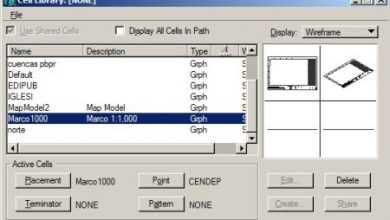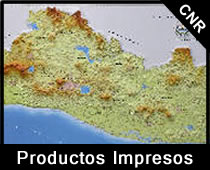My experience using Google Earth for Cadastre
I often see the same questions in the keywords by which users arrive at Geofumadas from the Google search engine.
Can I register using Google Earth?
How accurate are the images in Google Earth?
Why is my survey displaced with respect to Google Earth?
Before I get penalized for what you will read in this article, let me put you in context of the experience I had when carrying out a cadastral survey in a project where the breaking of paradigms in search of results was more valuable than adherence to methodologies and protocols. of traditionalists.
When I dimensioned the variables of what it implied to carry out orthophoto for the 25 municipalities that required the survey, I realized that there were things that did not converge:
-The time to make flights had already passed, because the country is tropical and there is an optimum time before which the cloudiness, smoke and weather conditions,
-They were years in which the satellite image bought by scraps was not an option with the precisions that are now offered,
-The public institution that granted permits to fly was half old-fashioned, it wanted a millionaire of money (on the table, of course), due to the dispersion of each municipality. Besides that the plane charged me an extra to raise a fat boy that the institution said was the only one capable of supervising those flights.
-The money that was available had barely reached to make good orthophoto, but little uprising.
-While I had the money, doing the orthophoto entailed times that prevented obtaining results before the dates of approval of the cadastral values for the change of five years.
When reviewing the results sought by the project, I realized that the disruptive methodology through a joint cadastre model was more important than precision. It was more important to demonstrate the multipurpose model than the optimal quality of the simple legal approach. So, I preferred to submit to the scorn and rush for short-term results.
The article is based on that experience, more as an approach of technical application and common sense than a magic recipe; although I have arbitrarily used examples from a municipality, where I must admit that the “choros soup” brings back memories that go beyond the merely geomatic context.
Google Earth images have good precision (Relative).

Let's see the sample image. At the level of continuous coverage, it can be seen that the survey we did with a total station and georeferenced with geodetic gps, fits very well with the image that existed before 2013. Of course, for this, it was necessary to download the image to make it hunt with the points control that we had raised. In this case, a displacement (of the image, not the survey) had to be made of about 11 meters to the north-west.
The Google Earth image needs to be shifted relative to our precision survey. Once done, the image shows consistency.
Google Earth images do not have consistency in absolute precision.

Continuing with the same example, we see that the image that Google Earth updated in 2013 has a different displacement than the previous one. The overlap between the images has a gradient so well done that little is seen discontinuity; in the case of the road, see that as it is in the direction of the cut it is not seen as if it were transversal, but to the right of the survey you can see how the stream no longer coincides with the survey; Although it could have changed course, who knows it knows that there is a retaining wall from the bridge that has not changed in years.
So, using that image that is more recent involves the same work as with the previous one; determine identifiable points and associate them with control points in the field, and then move the image by a vector, which we are clear is different from that of the other image. The practice led to interesting solutions, in which the Google Earth image was a reference in the face of errors made with the total station, such as losing sight of the back, the detection that a team needed calibrated, the validation of the cadastral quadrants that obey a partition based on exact degrees, minutes and seconds, and what not to say as the evidence of a three-dimensional map showing the differences in the cadastral value that were paid for land and buildings. These things, without a reference image or the simple use of a CAD / GIS program are almost impossible.
The base of images of Google Earth is a set of fragments of shots of different years, with different sources and with inconsistency of absolute position between these pieces.
The positional accuracy of Google Earth is accurate.

Leaving aside the problem of images, the characteristics of the spheroid used by Google Earth are accurate with respect to any survey projected on it. In the image above, when showing the UTM coordinates in Google Earth, on a file of my survey that I have uploaded as kml, the precision of the coordinate has no discussion about the Datum WGS84, since that is a mathematical data.
In the middle of the Project, the gurus of the state institution passed by with some super-precision equipment. We told them that they could use our survey as support, since they were georeferencing properties for a titling project on demand. It was hard to get a lump out of my throat when they disparaged one of the cadastre boys, telling him that his lifting was useless.
The utility of Google Earth for cadastre is your benefit as support
The fact is that taking the previous decisions allowed to give Google Earth the use and merit it deserves. Like all the other tools used in the project, Google Earth is one more.
Google Earth is irreplaceable for the use of images that are not available, not only for a current year but also for other historical dates. I remember a meeting in which a mayor participated presenting the results: “Google Earth has been uan accessible solution to have images of the entire municipality, which never before offered us any company or institution of the state“. Faced with the question of a XNUMXs Cadastre guru, that the accuracy was bad, his words are recorded in my videos: “These guys solved it, if you have a better proposal, write it down and we'll consider it".
What we must not forget is that those in management require easy tools to demonstrate results at the central level. There are people who will never go to the field, and before them graphic demonstrations are needed for which Google Earth was irreplaceable at that time. Opening a kml or a WMS service and showing them that the urban and rural properties of the municipality are there, with the digital terrain model and the buildings with their elevations depending on before and after the project's entry ... is an invaluable experience. They are unaware of accuracy, are unaware of how we tailor the method, but are pleased to see graphical results and approve of breaking administrative bottlenecks or absurd multi-page reporting requirements.
Downloading the images from Google Earth was a carpentry thing. The value of the project was in the joint management; It was not necessary to buy a total station or millimeter GPS per municipality. One per community was enough, and they continue to do so since they only take turns during the year to follow up the survey or update with the resources that they committed annually as a re-investment of the proceeds and topographic survey in highway or system projects. hydrosanitary.
Resisting the option of using Google Earth as a reference is just fighting a wall. Those who have gone to offer cadastral services to the municipalities in this context will tell me that now the city halls do not want to pay for an extremely precise job, but for a local capacity-building service, use of low-cost resources and advice so that decisions are correct.
And so…
After all those years, I must admit that there were mistakes that I made, and of which I would write a larger article than this. I would have liked free software to be more mature, thus saving us another pile of money; or that the crowd mapping and cadastre fit for purpose had more diffusion, as it would have cost me less to explain practices that we have implemented since then. But to the results today I refer:
- The cadastre model based on joint management of municipalities is there, being adopted by other ventures, not because of its innovation but because of the lessons learned.
- Instead of doing a cadastre in 25 municipalities, experience led to it in 89. Just to take advantage of the economy of scale of joint management, and of course, use Google Earth images as support.
- The innovation in local human resource and economic counterparts from where others would not look, led to demonstrate that every dollar invested by the municipality, recovered it in less than two years and multiplied it six times in revenue in a period of 10 years.
- The municipalities that achieved full coverage of their territories, are currently updating using the income resource they receive from the entire territory, and they are changing the metadata of accuracy and quality and geometry.
Almost at the end of the project, I met again with the gurus of the state institution, who were validating some problems that their uprisings had had, of which they had already issued titles and entered the national system. First, with an authoritarian tone, they told us that we should hand over the raised maps. When we gave them an address to download via WFS they left us looking like aliens, then one of the guys who belittled it showed them using gvSIG; He told them that they could download them from there whenever they wanted. His arrogance changed his face, and we changed our irony for some pity, before his following comment:
Excuse me, Don Golgi, what we really want is that you provide us with the images that you downloaded from Google Earth.








Interesting methodology for fiscal cadastre, or tenencial map. I do not think it applies to multi-purpose or multipurpose cadastres.